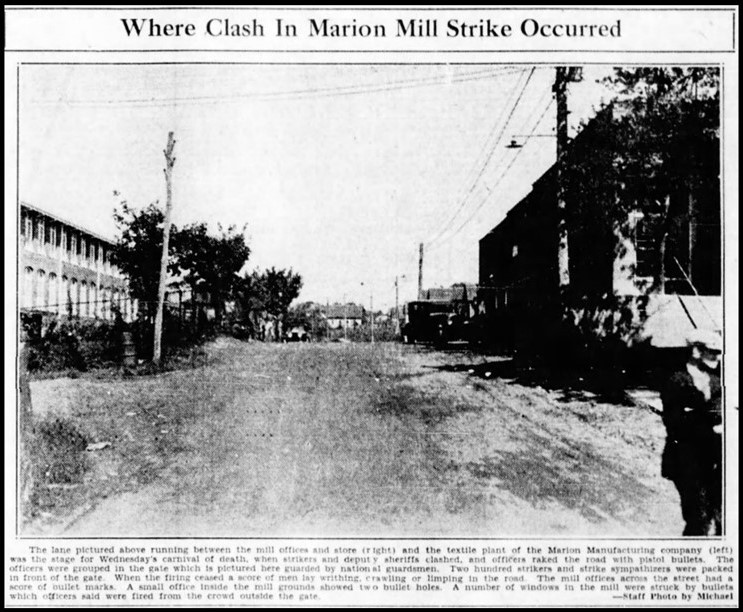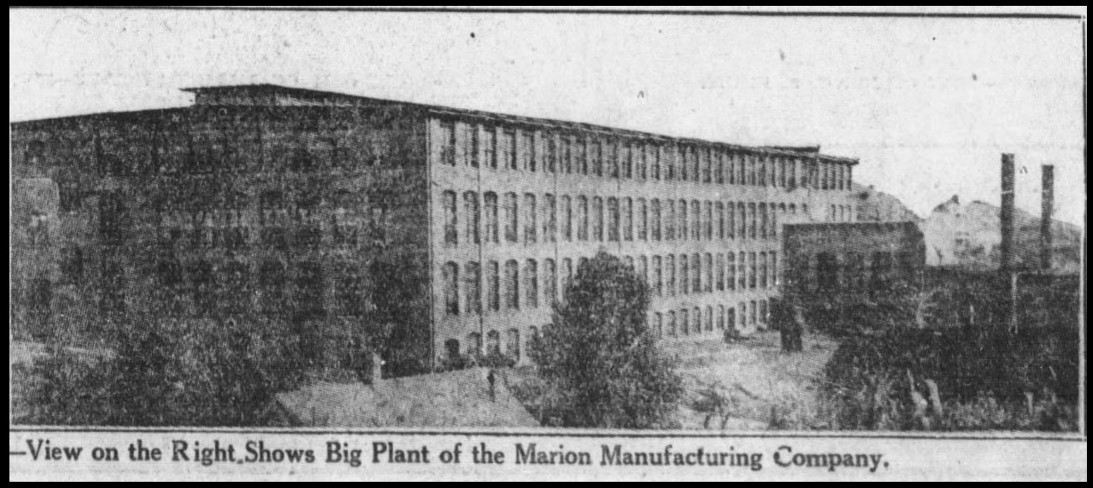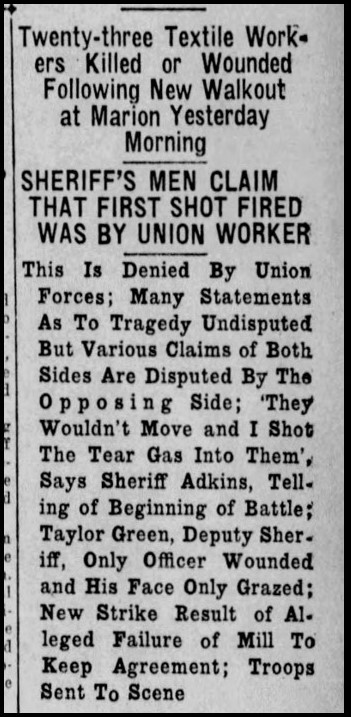
On this day in WNC history: On October 2, 1929, deputies fired into a crowd of striking workers in Marion, North Carolina. Six were killed and even more wounded at the Marion Manufacturing Company in one of the deadliest acts of strike-busting in the South.
This year marked an apogee of strikes and labor organization in southern textile mills. Eight years prior, over 100 miners were killed at the Battle of Blair Mountain in West Virginia in a period of coal clashes and unionization attempts. Later in the 1920s, many textile workers reacting to grueling and dirty work conditions under the “stretch-out” system, along with a reduction of their pay in company scrip, began organizing and demanding better conditions. Spearheaded by the National Textile Workers Union (an organization supported by the Communist Party), concurrent strikes began early in 1929 at the Bemberg-Glanzstoff Rayon Corporation in Elizabethton, Tennessee and at Loray Mills in Gastonia, North Carolina. Female employees were key to the organization of both strikes, and the latter is most famously remembered for the death of Ella May Wiggins. National Guard members, local police, and union-busting mobs were called to both of these events.
The Marion strikes (which occurred at the neighboring Clinchfield Mill as well) began July 11. Workers struck without official union support, resisting involvement by communist organizers. After frequent violence and threats, with two National Guard units present, workers returned to these mills September 11, with no raise in pay and a mandated 55-hour workweek. Marion Manufacturing Mill refused to rehire 114 of the strikers, leading to further anger. Workers struck again on October 2, and deputies were dispatched by the local sheriff. Though some details are murky, deputies shot into a crowd of strikers, killing four on site, wounding at least fifteen, with two others dying later. Nearby hospitals refused medical care to strikers, and churches of the mill village refused to administer their funerals. Eight deputies were charged, but acquitted in December. They contended the strikers were armed, but no guns were found, and the New York Times reported those killed were shot in the back.



